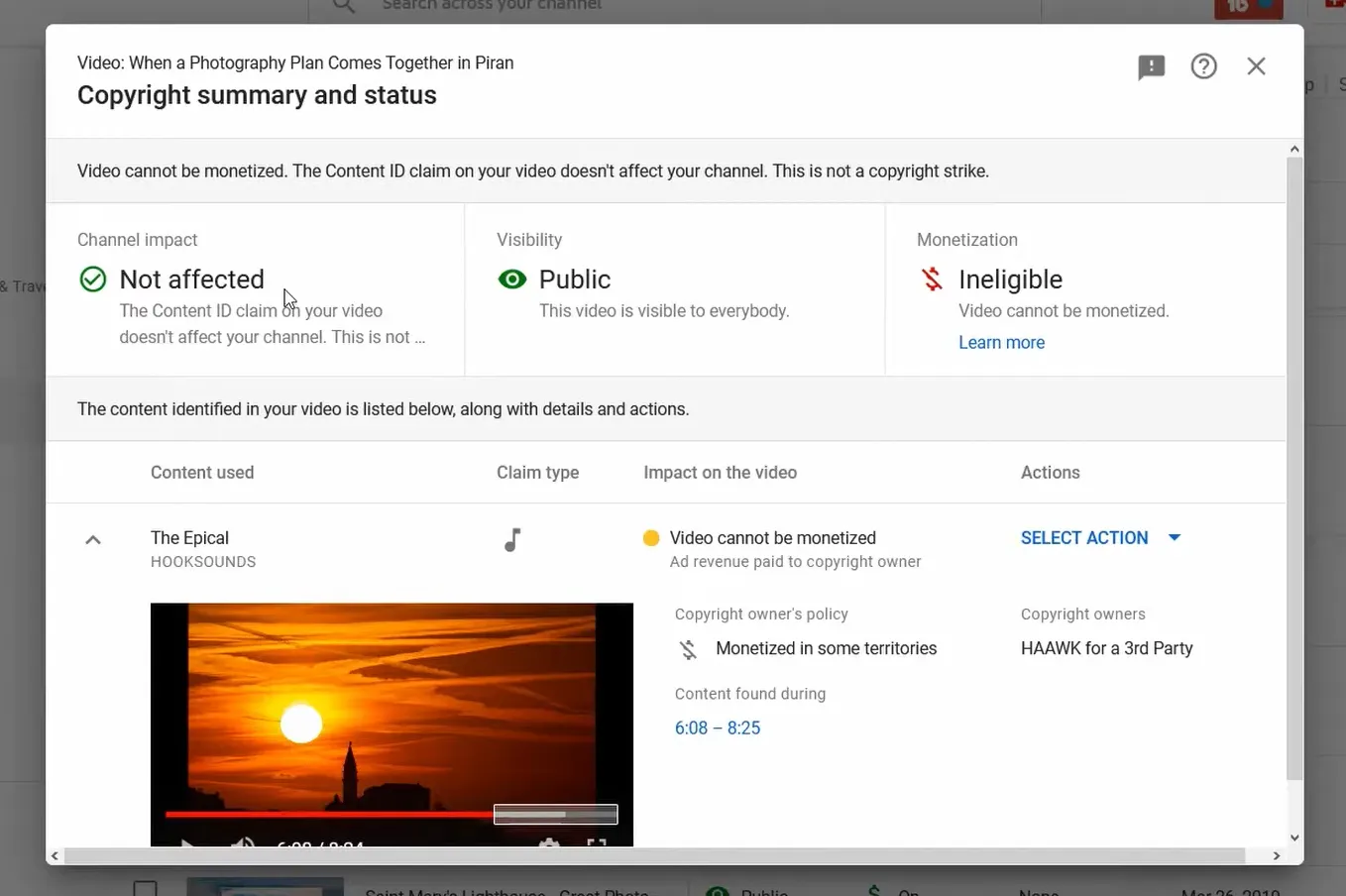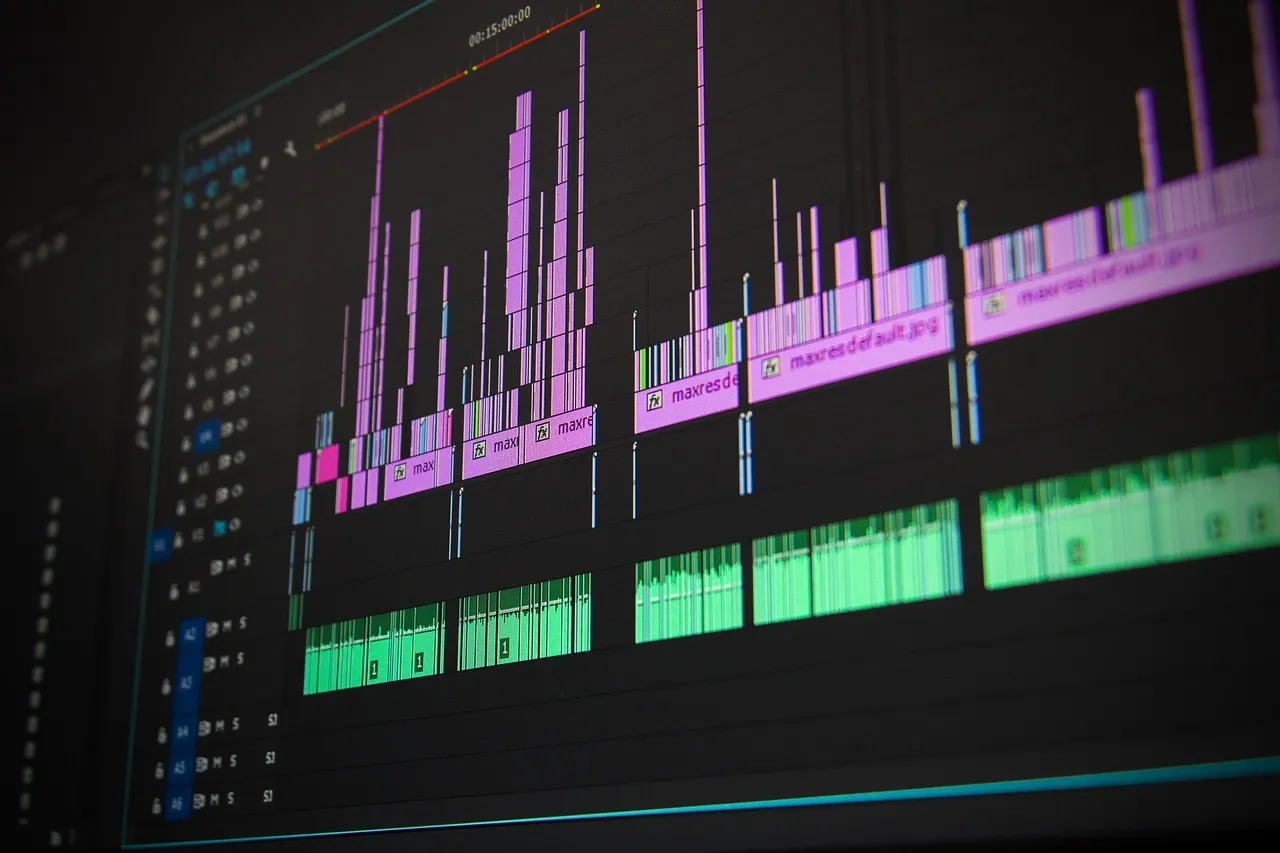If you’ve ever uploaded a video on YouTube and got hit with a copyright claim, you know how frustrating it can be. You spend hours putting together a video, only to find out that all the money it earns is going to someone else. And if you’re running a faceless YouTube channel - especially one using stock footage or content from other sources - you’re more likely to face these issues.
So, let’s break it all down.
What are copyright claims? How can they affect your channel’s monetization? And most importantly, how can you avoid them while still running a successful channel?
Stick around as I’ve got tips, tools, and a few tricks up my sleeve that will help.
What Is a Copyright Claim?
First, let’s clear this up: A copyright claim is not the same thing as a copyright strike.
A copyright claim happens when YouTube’s Content ID system detects copyrighted material in your video. This could be a song, a video clip, or even background footage that belongs to someone else.
Unlike a copyright strike - which is way more serious - a claim just means that the owner of the copyrighted content can monetize your video. In other words, they get the revenue, not you.

Here’s the good news: copyright claims won’t get your channel taken down. But too many claims can hurt your chances of getting YouTube to promote your content or, worse, get you kicked out of the YouTube Partner Program.
When a copyright claim happens, the owner of the original content can choose to:
- Monetize your video and take all the ad revenue
- Block your video in certain regions or worldwide
- Mute the copyrighted audio in your video
As for copyright strikes, this happens when a copyright holder files a formal complaint against your video. If you get three strikes, your channel could be permanently removed from YouTube. So, while claims are less severe, they can still hurt your bottom line and put your channel at risk if you’re not careful.
Commentary and Fair Use: What’s Safe?
If your channel is all about commentary or reaction videos, you might think you’re safe under “fair use.” Fair use allows you to use copyrighted material without permission - but only if you meet certain criteria.
To qualify as fair use, your video needs to:
- Add significant commentary or criticism
- Use only small portions of the original content
- Transform the original content into something new
For example, if you’re reviewing a movie, you can show short clips while giving your opinion. But uploading full scenes or large portions of a sports game? That’s a red flag. Sports leagues are especially aggressive about protecting their content. Even if your video is transformative, it’s risky to rely too heavily on copyrighted sports footage.
Music and Monetization: A Risky Combo
Want to add some music to your video to make it more engaging? Be very careful. YouTube’s Content ID system is incredibly good at detecting copyrighted songs, and even a few seconds of a popular track can get you a claim.

Here’s what happens when you use copyrighted music:
- The copyright holder can monetize your video and collect all the ad revenue
- Your video might get blocked in some regions - or worldwide
- Worst-case scenario: your channel could get a copyright strike
The best way to avoid this? Use royalty-free music from platforms like Epidemic Sound, Artlist, or YouTube’s own Audio Library, which offers a decent selection of free tracks for creators.
What Happens When Someone Else Gets Your Revenue?
When you use content without proper licensing, the original owner can claim the video and take your earnings. Even if your video blows up and gets millions of views, you won’t see a dime.
For faceless YouTube channels, this can be a huge problem - especially if you rely on stock footage or public content. Imagine spending hours editing a video, optimizing it for SEO, and watching it rack up views… only to get a copyright claim that siphons off all the revenue.
Multiple claims can also hurt your channel’s reputation. YouTube might see you as a high-risk creator and reduce your content’s visibility in search and suggested videos.
Avoiding Copyright Claims the Right Way
Some creators try to “trick” YouTube’s Content ID system by altering videos - speeding them up, mirroring footage, or changing audio pitch. But guess what? YouTube’s AI is way too smart for that. It’ll catch most of these tricks, and you might end up with even more problems.
Instead, focus on these safer strategies:
- Use properly licensed materials. Always check the terms before using any footage or music.
- Transform the content. Add commentary, critique, or humor to make it original.
- Keep clips short. The less you use, the lower the risk.
- If you’re editing clips, mix them up - cut them into short segments, change the order, and combine them with other elements to create something unique.
Where to Find Copyright-Free Content
The easiest way to avoid copyright claims is to use content that’s free and safe. Luckily, there are plenty of resources out there that offer high-quality, royalty-free footage and music. Here are some top picks:
- Pexels – Offers thousands of free stock videos and images for commercial use.
- Pixabay – Another great source for free stock videos and images, available for commercial use.
- Mixkit – Great for unique, creative footage, offering a variety of free video clips.
- Videvo – Provides both free and premium stock videos, sound effects, and motion graphics.
- Unsplash – Known for high-quality, free images, but it also offers videos for commercial use.
- Artgrid – A platform with a wide selection of royalty-free stock videos for various projects.
- Coverr – Offers a curated collection of free videos for commercial use, perfect for websites and marketing videos.
- Life of Vids – A site that provides high-quality, free stock footage for personal and commercial use.
- Storyblocks and Envato Elements – Provides a massive library of stock footage, audio, and templates (requires a subscription, but worth it for regular creators).
- archive.org – For those of you creating educational or documentary-style content, this is a goldmine. The Wayback Machine is packed with old footage and vintage videos that are in the public domain. Just make sure to double-check the licensing details before using anything.
Another hack? Visit Alibaba and browse product showcase videos from manufacturers. Many of these videos aren’t monetized, and with permission, you can use them for your own content. Just be sure to reach out to the creators to get approval.
Monetization: Beyond Ad Revenue
Copyright claims don’t just affect ad revenue - they can also hurt your chances of making money through other monetization strategies, like:
- Sponsorships – Brands are less likely to work with channels with copyright issues
- Merchandise sales – If your videos get blocked, you lose potential customers
- Channel memberships – Fewer views mean fewer members
To keep your channel healthy and profitable, stay proactive. Monitor your content, avoid risky materials, and always focus on creating original, engaging videos.